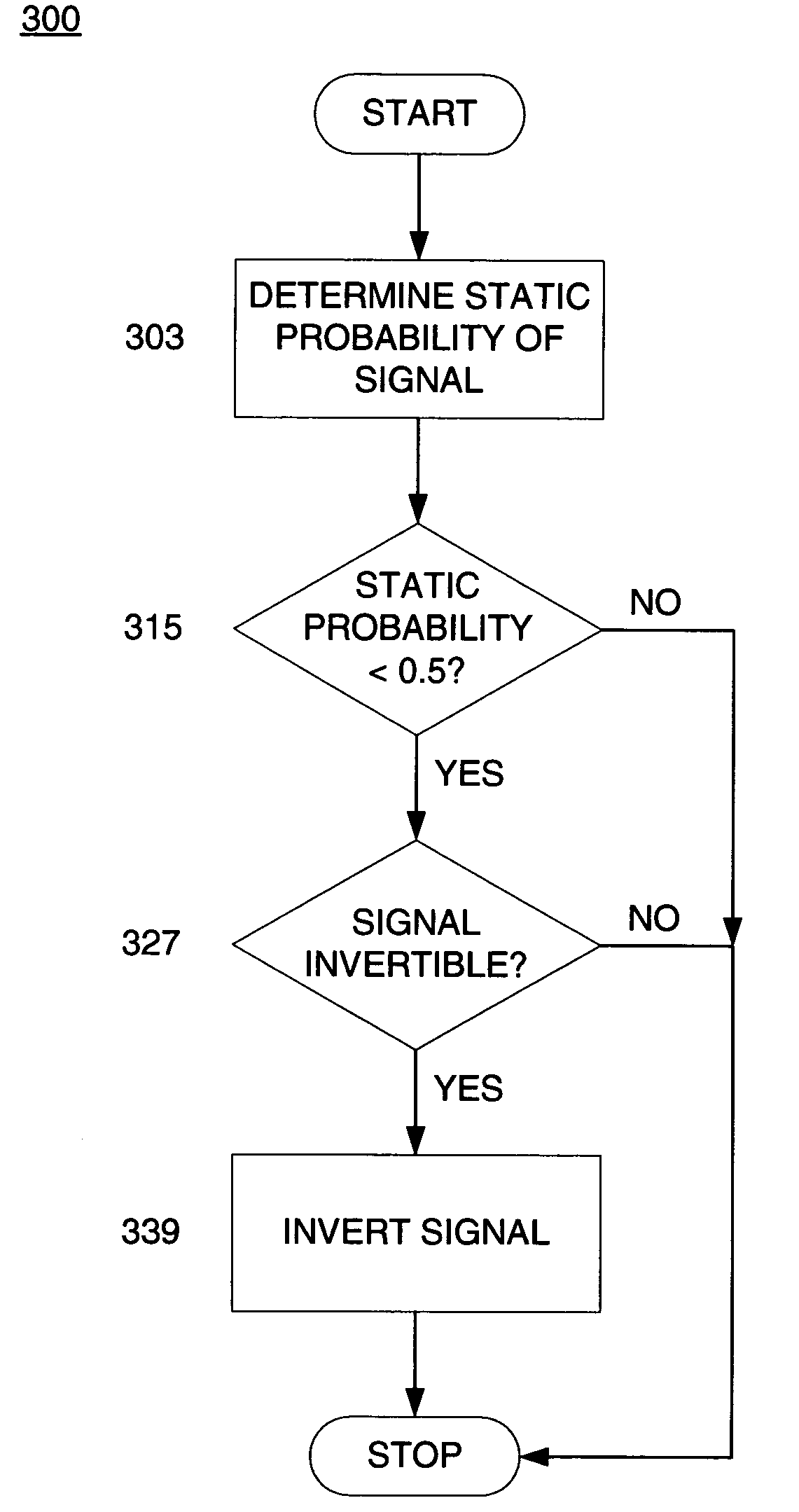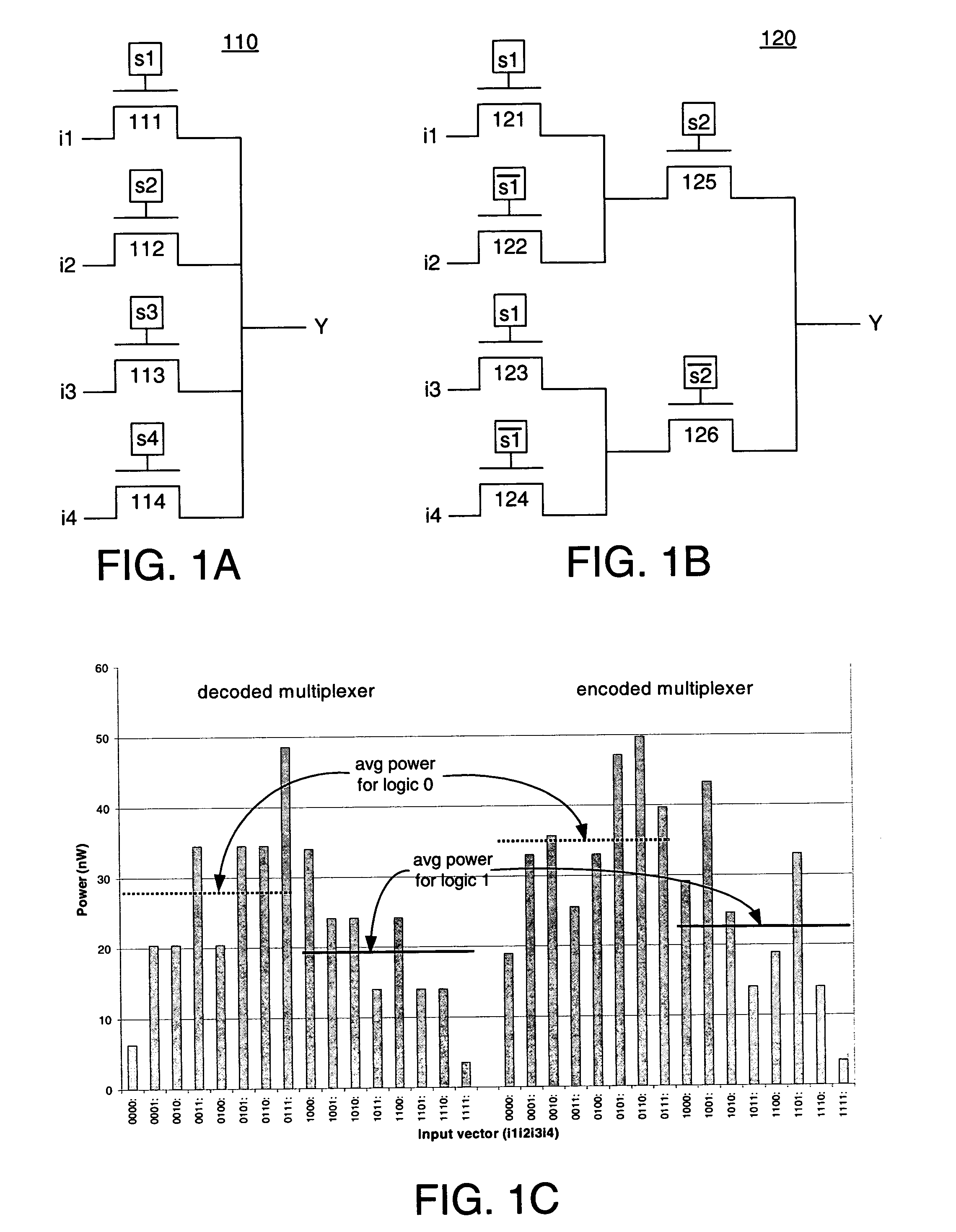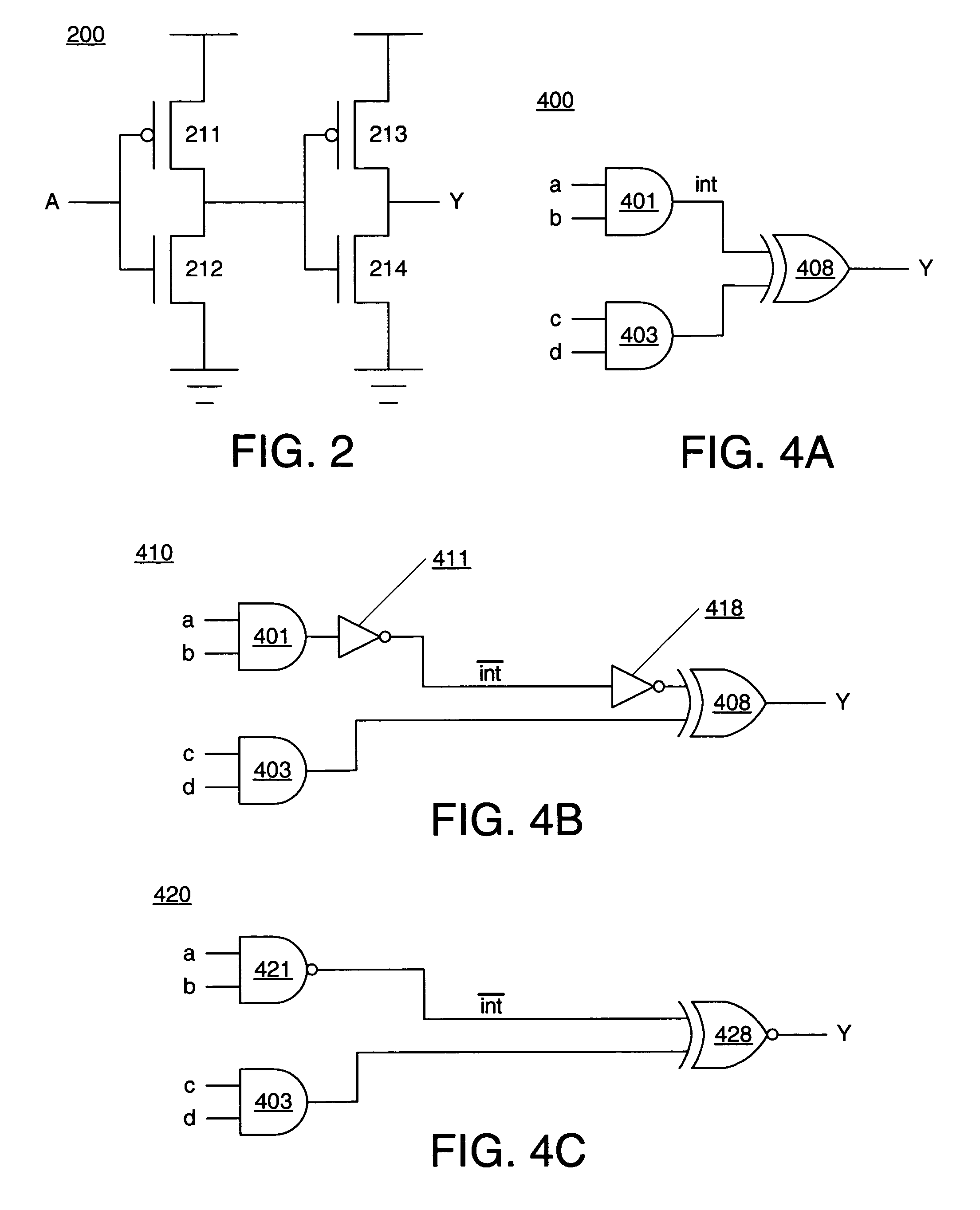Leakage power optimization for integrated circuits
a technology of integrated circuits and leakage power, applied in the field of leakage power optimization of integrated circuits, can solve the problems of gate leakage, exponential increase in subthreshold leakage, and increasing the dominant component of total power dissipation in leakage power, so as to reduce leakage power and achieve no area or performance penalty
- Summary
- Abstract
- Description
- Claims
- Application Information
AI Technical Summary
Benefits of technology
Problems solved by technology
Method used
Image
Examples
Embodiment Construction
[0020]The present invention is believed to be applicable to a variety of circuits and systems. The present invention has been found to be particularly applicable and beneficial for programmable logic devices, including field programmable gate arrays. While the present invention is not so limited, an appreciation of the present invention is presented by way of specific examples, such as with an FPGA comprising an array of configurable logic blocks having lookup tables for implementing logic functions.
[0021]In the following description, numerous specific details are set forth to provide a more thorough understanding of the present invention. However, it will be apparent to one ordinarily skilled in the art that the present invention can be practiced without these specific details. In other instances, well-known circuits and devices may be omitted or presented in abstract form in order to avoid obscuring the present invention.
[0022]FIG. 1A shows an implementation of a 4-to-1 decoded mu...
PUM
 Login to View More
Login to View More Abstract
Description
Claims
Application Information
 Login to View More
Login to View More - R&D
- Intellectual Property
- Life Sciences
- Materials
- Tech Scout
- Unparalleled Data Quality
- Higher Quality Content
- 60% Fewer Hallucinations
Browse by: Latest US Patents, China's latest patents, Technical Efficacy Thesaurus, Application Domain, Technology Topic, Popular Technical Reports.
© 2025 PatSnap. All rights reserved.Legal|Privacy policy|Modern Slavery Act Transparency Statement|Sitemap|About US| Contact US: help@patsnap.com



